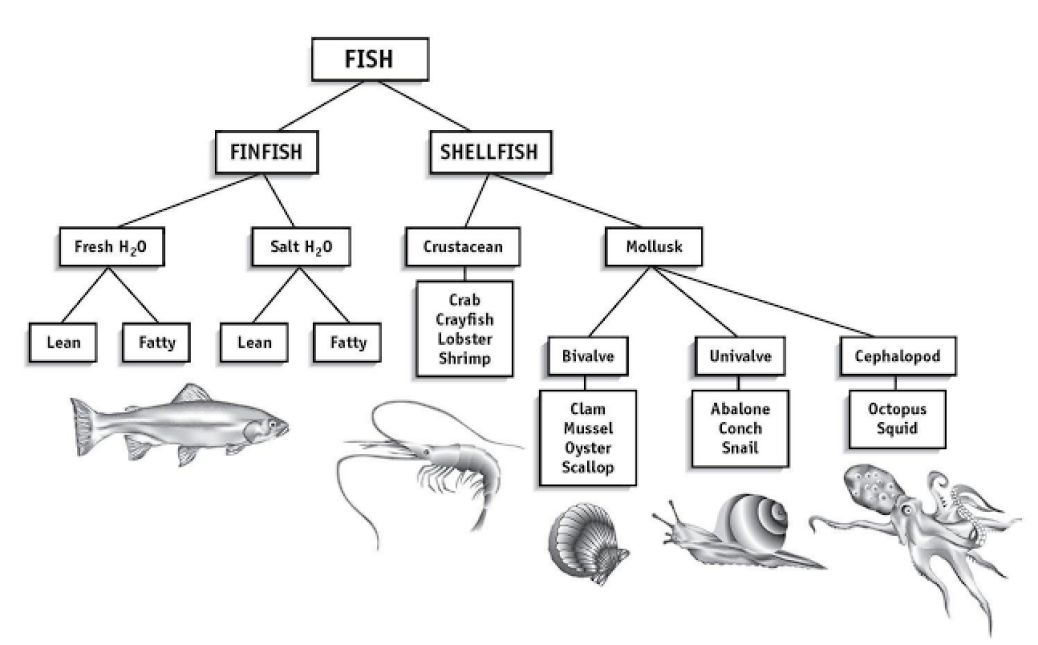Seafood Consumption
- Fish + Shellfish
- Sources of all seafood consumed in the US
- 6% Domestic Farmed
- 9% Domestic Wild Fisheries
- 38% Imported Wild Fisheries
- 47% Imported Farmed
- The United States consumed an estimated 22.13 KG per capita of seafood in 2019.
Classification of Fish and Shellfish
- There is such a large variety of creatures that are harvested from the water, so it is hard to classify them using only one set of criteria
- Vertebrates & Invertebrates
- Salt water & Fresh water
- Lean & Fat






